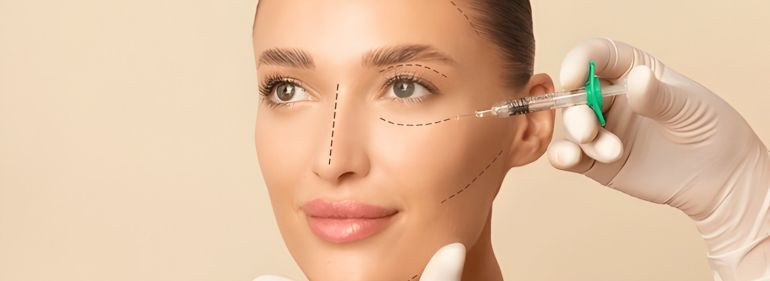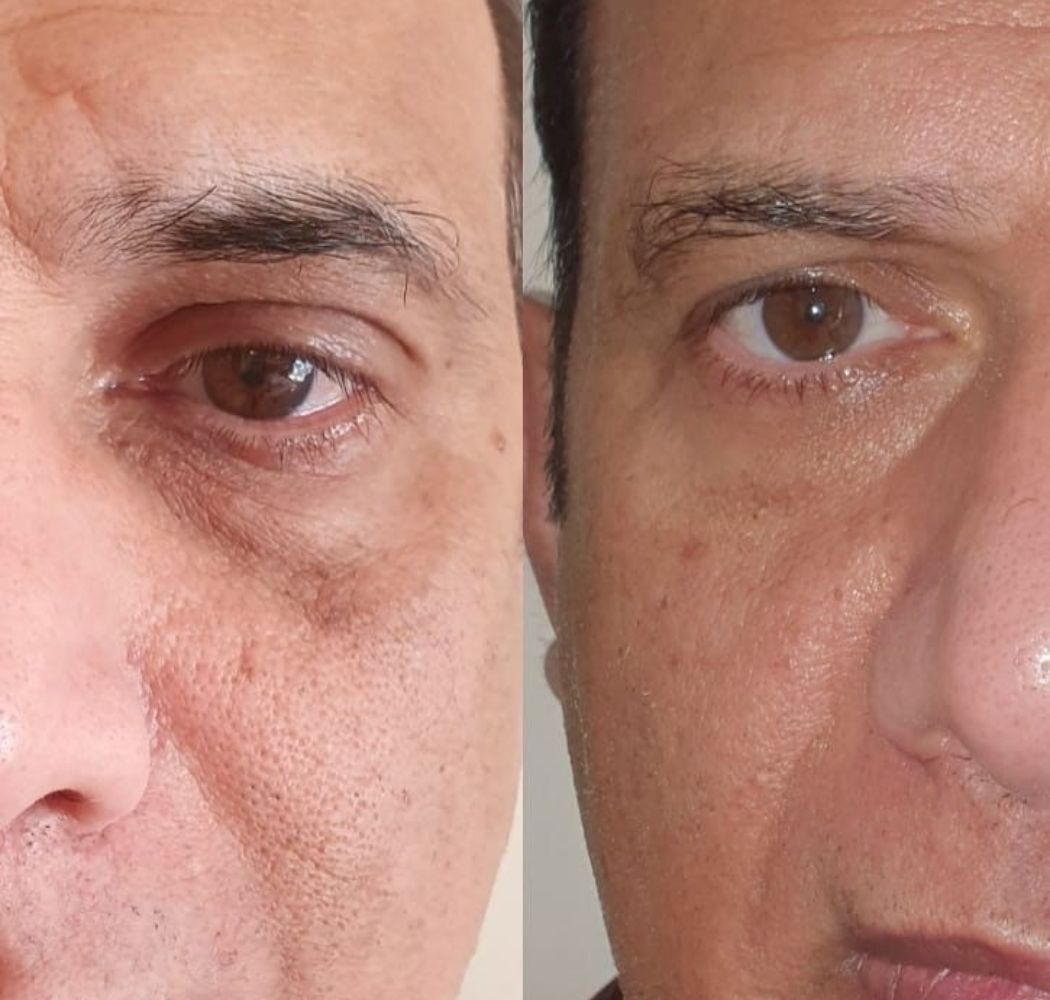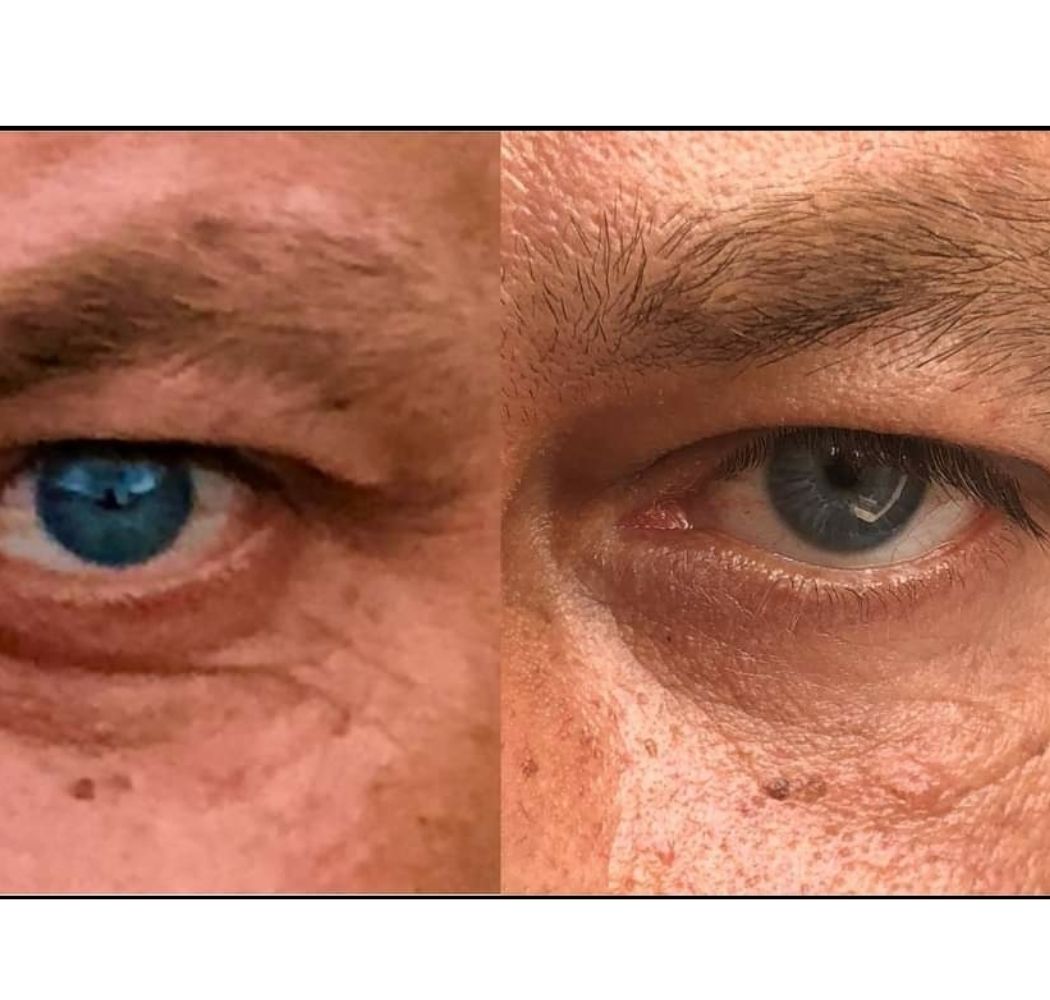- Prity Skincare Clinic
- Collagen Injections
Collagen Injections

Collagen Injections
Collagen is a natural protein found in bone, cartilage, skin, and tendons; there are 27 different types of naturally occurring collagens in the body. Certain collagens found in skin tissue are essential for skin strength and elasticity. Over time, this collagen breaks down, causing skin to lose its suppleness and begin to wrinkle and sag. In an effort to fight these signs of aging, many people turn to collagen injections to replace their original supply.
Collagen injections have been used for decades to treat minor imperfections in facial skin, including laugh lines, wrinkles, creases, crow’s feet, and acne scars. Collagen is also used to create fuller lips and cheeks and can be used to treat areas of the chest, back, and neck. However, facial collagen injections are by far the most common.
Our skin consists of three layers: the epidermis (controls loss of water from our cells), dermis (contains collagen which provides shape) and hypodermis / subcutaneous tissue (contains elastin, allowing our face to snap back into shape following facial movement).
The dermis is primarily made up of a protein called collagen. Collagen protein forms a network of fibres which provide a structure for the growth of cells and blood vessels. Because it is the primary component of the dermis, collagen acts as the support structure for the skin providing its framework, shape and strength. From the age of 25, we lose up to 1.5% of collagen from our skin every year. Over time, our skin loses it suppleness and begins to wrinkle and sag.
Collagen injections work in different ways to other injectables such as Botox® or dermal fillers.
Collagen Injections Prices

1st SESSION
Collogen Injections
In your initial consultation we will discuss your desired results with you.
Price: £260 (Price For Per Treatment)

Touch up session
Touch up treatment
Touch up treatment required after 2 to 4 weeks time. After that result last 6 weeks to 6 months, may be more.
Price: £240 (Price For Per Treatment)
Collagen injections have been used for decades to replenish the skin’s suppleness and help maintain its youthful appearance. Collagen Replacement Treatment is a safe, non-surgical treatment that can even out facial lines and scars, as well as improve the look of specific parts of the body.
- Collagen offers clients:
- Smoother skin Fewer wrinkles and lines
- Defined lip lines
- Lip fullness
- Filling in of shallow acne scars
- Overall younger and fresher appearance
Collagen benefits are not limited to the physical; there are psychological benefits as well. As you begin to look more like you did years ago, your confidence and self-image improves.
The soft tissue of the face, neck, chest, décolletage, hands and body areas and literally erase lines and wrinkles all over the face and body. It also can improve stretch marks.
Collagen injections replace the skin’s natural collagen.
If you are in good health, between the ages of 25 and 60, and still have relatively flexible skin, you are probably a good candidate for collagen treatment. However, as with all cosmetic procedures, it is important for anyone considering injections to have a realistic understanding of what collagen can accomplish. You should bear in mind that collagen treatment is intended to address moderate, relatively early signs of aging. While it can be an excellent way to minimise or even eliminate certain facial lines and wrinkles, collagen is not intended as an antidote to advanced aging or more serious cosmetic problems.
During the initial consultation, we will carefully review the medical history of prospective clients to make sure they meet the basic criteria for collagen treatment. Most people who are in good health are good candidates for injections. In some cases, however, existing medical conditions or physical situations make the use of collagen inadvisable. Women who are pregnant or nursing, for example, should postpone treatment, and people with certain autoimmune diseases should avoid the use of collagen altogether.
The actual collagen injection procedure is relatively straightforward. Treatment usually takes between 30 and 60 minutes. On the basis of each client’s cosmetic needs, place collagen injections in areas that will optimise the elimination of wrinkles and facial lines. Within a couple of days, clients usually begin to see noticeable improvements in their appearance, and any puffiness or bruising resulting from treatment disappears.
Some clients find the injections slightly uncomfortable; especially those performed on the lips or around the nose and mouth. A topical anaesthetic can be applied to the injection area to minimise pain. Some types of collagen contain a small amount of lidocaine, which also helps to numb the injection area.
Immediately after the treatment there may be some temporary bruising, puffiness, or tenderness around the injection site. This is normal and gradually subsides in a few days. Clients can resume their day-to-day activities almost immediately following treatment. The longevity of a collagen treatment varies, lasting anywhere from six weeks to six months or more. Over time, the body will naturally absorb the collagen, and additional treatments will be necessary to maintain the aesthetic enhancement.
Most collagen treatments require “touch up” injections two to four times a year to maintain results.
Facial collagen injections are a safe and effective way to achieve shapely lips and smoother, less wrinkled skin. The area may be a little swollen and tender for 24 hours. Minimal redness or bruising can occur. None of these side effects are very serious and they will heal in a matter of hours or a few days.
However, clients should be aware that the treatment does involve possible risks and complications, including allergic reactions, uneven skin tone around the treatment area, and infection. As with any cosmetic procedure, clients should have a thorough understanding of the risks and benefits of collagen treatment before deciding to undergo the procedure.
Collagen injections although not surgical procedures do carry risks.
Risks include:
- Bacterial infection
- A reaction to the anaesthesia
- Allergic reaction
- Redness Swelling or bruising
- Itching & peeling
- Abscesses, open sores
- Scarring
- Lumpiness
Women who are pregnant, patients with certain autoimmune system diseases, people with allergies to various components of collagen are typically not suitable for collagen injections. We will conduct a full evaluation at your initial consultation to determine if you are a candidate for collagen injections.


